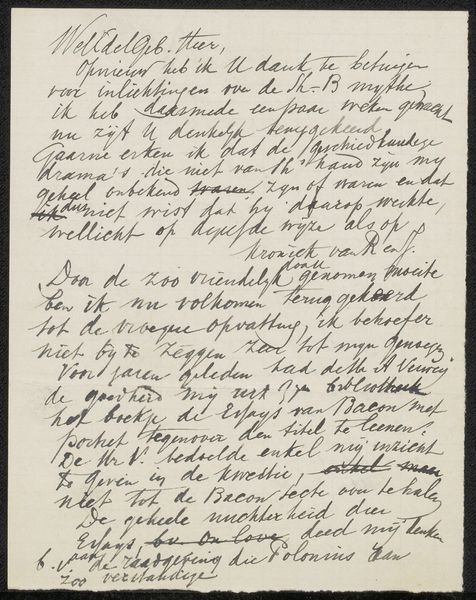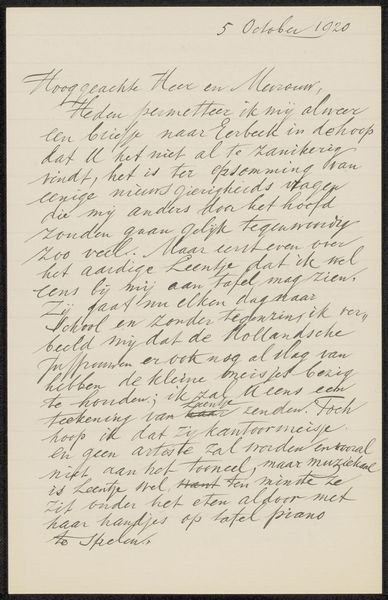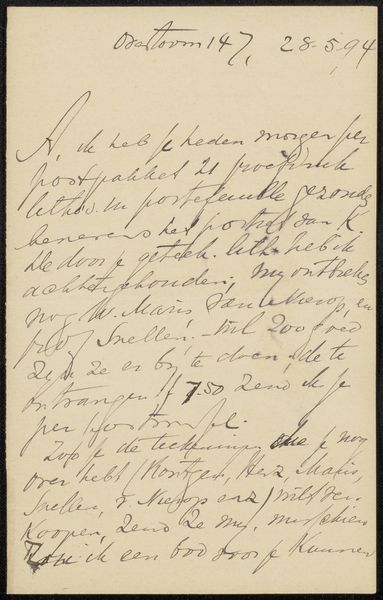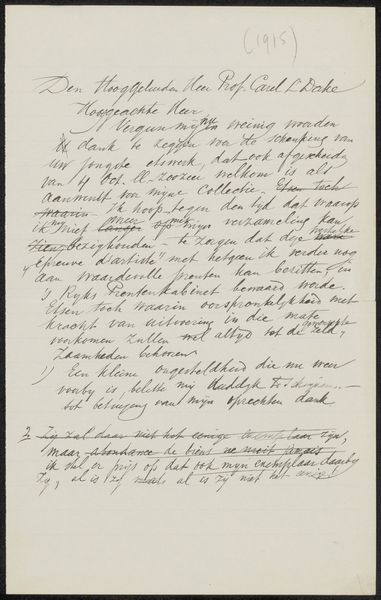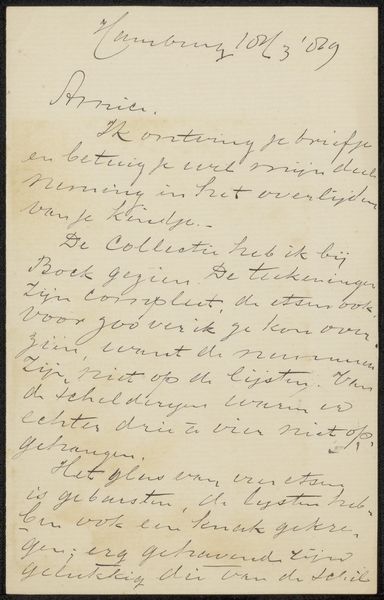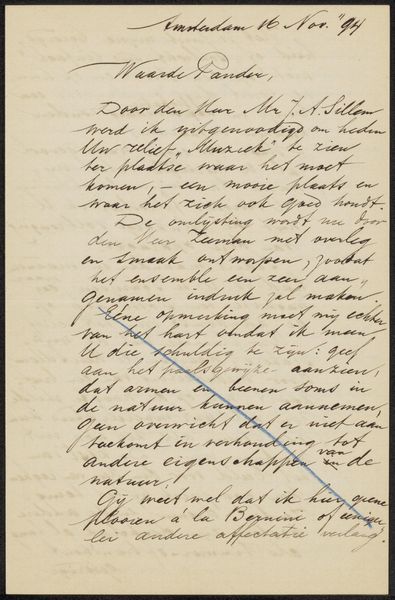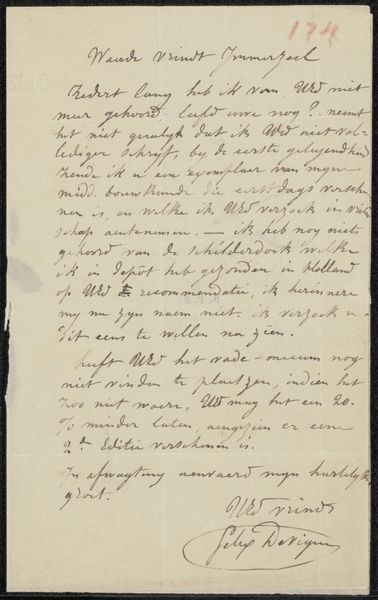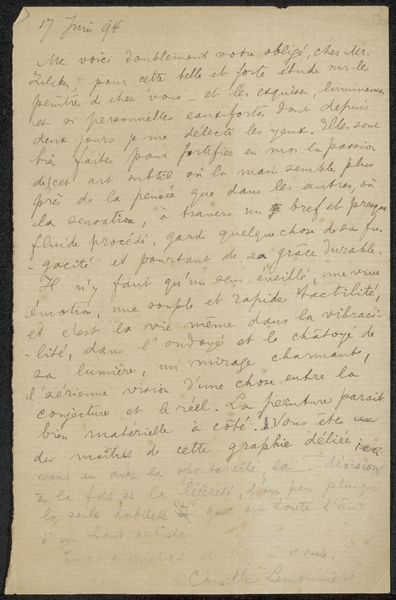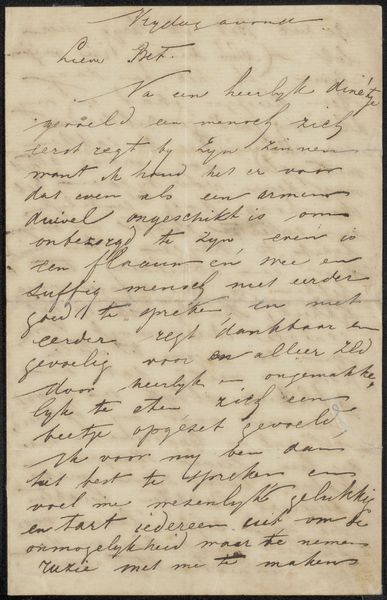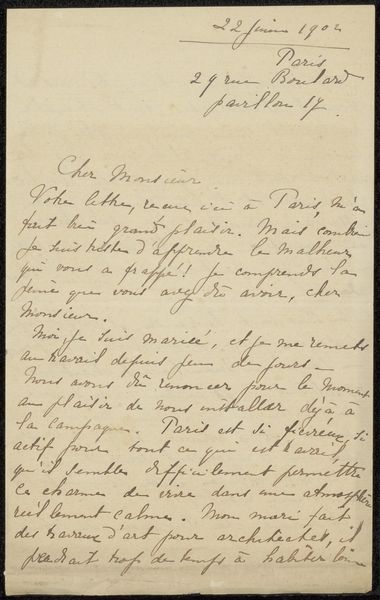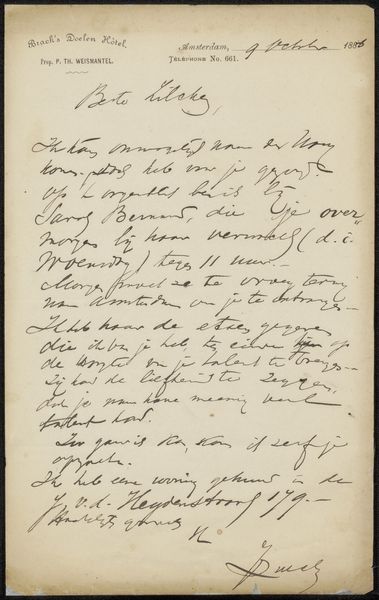
drawing, ink, pen
#
portrait
#
drawing
#
ink
#
intimism
#
pen
#
calligraphy
Copyright: Rijks Museum: Open Domain
Curator: Here, we have August Allebé’s "Brief aan Jan Veth," likely from 1908. It’s an ink drawing, a personal letter really, showcasing incredible calligraphy. What strikes you about it? Editor: It feels so intimate, almost like we're intruding on a private conversation. The script itself is beautiful, like a piece of art in its own right, but honestly, I can't read a word of it! What was the artist hoping to convey? Curator: You know, it is wonderful how a script, indecipherable, transcends its utility. Allebé’s handwriting becomes an expression, a dance of sorts! In a way, the letter touches upon the very heart of artistic practice – the push and pull of technical demands versus creative liberties, what we might call ‘kantigheid’–awkwardness, friction? Notice the flourishes—do they emphasize this struggle or simply soften it? Editor: That's interesting... the flourishes almost feel like a way to mask the difficulty, to add a touch of elegance. Curator: Perhaps. Letters were so much more than utility. Think about it. This letter exists within a tradition of personal expression, far preceding our world of quick texts. Every stroke and choice in letter-writing carried its own weight of artistic declaration. The style alone tells you something about intimacy in artistic practice. Wouldn’t you say so? Editor: Definitely, I hadn't thought about letters that way. It's almost a lost art form now. It makes you wonder about the hidden messages and nuances we miss in our digital age. Curator: Exactly! Looking closely makes us wonder…how much of our digital communication would hold artistic weight when displayed at a Rijksmuseum for future audiences? Editor: Very little I'd guess! It's a nice reminder to slow down and think about the intent behind what we create, even in something as simple as handwriting.
Comments
No comments
Be the first to comment and join the conversation on the ultimate creative platform.
